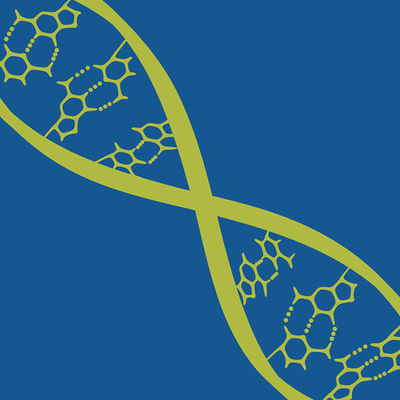预约演示
更新于:2025-05-07
Bcl-2 family x Bcl-2
更新于:2025-05-07
基本信息
关联
113
项与 Bcl-2 family x Bcl-2 相关的药物靶点 |
作用机制 Bcl-2抑制剂 |
在研机构 |
原研机构 |
非在研适应症 |
最高研发阶段批准上市 |
首次获批国家/地区 美国 |
首次获批日期2016-04-11 |
靶点 |
作用机制 Bcl-2抑制剂 [+1] |
在研机构 |
最高研发阶段批准上市 |
首次获批国家/地区- |
首次获批日期1800-01-20 |
靶点 |
作用机制 Bcl-2抑制剂 |
在研机构 |
原研机构 |
非在研适应症- |
最高研发阶段申请上市 |
首次获批国家/地区- |
首次获批日期1800-01-20 |
994
项与 Bcl-2 family x Bcl-2 相关的临床试验NCT06859008
Feasibility of Treating Relapsed/Refractory B-Cell Non-Hodgkin Lymphoma With Zanubrutinib in Combination With the BCL2 Inhibitor, Sonrotoclax, Focusing on Access for Underrepresented Ethnic/Racial Minorities
This phase I trial tests zanubrutinib in combination with sonrotoclax for treating underrepresented ethnic and racial minorities with B-cell non-Hodgkin lymphoma that has come back after a period of improvement (relapsed) or that has not responded to previous treatment (refractory). Many racial and ethnic minorities face additional treatment challenges which may lead to poorer outcomes, however, there are fewer racial and ethnic minorities participating in clinical trials. Zanubrutinib, a type of tyrosine kinase inhibitor, blocks a protein called Bruton tyrosine kinase (BTK), which may help keep cancer cells from growing. Sonrotoclax works by blocking a protein called B-cell lymphoma-2 (Bcl-2). This protein helps certain types of blood cancer cells to survive and grow. When sonrotoclax blocks Bcl-2, it slows down or stops the growth of cancer cells and causes them to die. Zanubrutinib and sonrotoclax have been shown to be an effective treatment for B-cell cancers. Giving zanubrutinib in combination with sonrotoclax may be effective in treating ethnic and racial minorities with relapsed or refractory B-cell non-Hodgkin lymphoma.
开始日期2026-02-07 |
申办/合作机构 |
NCT06672146
A Randomized Phase II Trial of ASTX727 and Venetoclax Compared With ASTX727, Venetoclax, and Enasidenib for Newly Diagnosed Older Adults With IDH2 Mutant Acute Myeloid Leukemia: A MyeloMATCH Substudy
This phase II MyeloMATCH treatment trial studies how well ASTX727 and venetoclax plus enasidenib works compared to ASTX727 and venetoclax alone for the treatment of older patients with newly diagnosed acute myeloid leukemia (AML) or younger patients who are considered unfit for standard treatment, and who have an abnormal change (mutation) in the IDH2 gene. This gene mutation can cause AML to grow and spread. This trial is being done to see if adding enasidenib to the usual treatment can help more patients with the IDH2 gene get rid of AML. Cedazuridine is in a class of medications called cytidine deaminase inhibitors. It prevents the breakdown of decitabine, making it more available in the body so that decitabine will have a greater effect. Decitabine is in a class of medications called hypomethylation agents. It works by helping the bone marrow produce normal blood cells and by killing abnormal cells in the bone marrow. Venetoclax is in a class of medications called B-cell lymphoma-2 (BCL-2) inhibitors. It may stop the growth of cancer cells by blocking Bcl-2, a protein needed for cancer cell survival. Enasidenib works by stopping the growth and spread of tumor cells that have the IDH2 mutation. Giving ASTX727 and venetoclax plus enasidenib may work better in treating AML patients with the IDH2 mutation.
开始日期2025-12-27 |
申办/合作机构 |
100 项与 Bcl-2 family x Bcl-2 相关的临床结果
登录后查看更多信息
100 项与 Bcl-2 family x Bcl-2 相关的转化医学
登录后查看更多信息
0 项与 Bcl-2 family x Bcl-2 相关的专利(医药)
登录后查看更多信息
82,364
项与 Bcl-2 family x Bcl-2 相关的文献(医药)2025-12-31·Cancer Biology & Therapy
NVP-2, in combination with Orlistat, represents a promising therapeutic strategy for acute myeloid leukemia
Article
作者: Wu, Di ; Su, Xin ; Zhu, Qing ; Cheng, Jia ; Cai, Linbo ; Fei, Danhong ; Chen, Yanling ; Yu, Juanjuan ; Jiao, Wanyan ; Gao, Yuqing ; Pan, Jian ; Li, Xiaolu ; Xiao, Peifang ; Zhang, Zimu
2025-12-31·Cancer Biology & Therapy
Targeting the IKZF1/BCL-2 axis as a novel therapeutic strategy for treating acute T-cell lymphoblastic leukemia
Article
作者: Ye, Chunmei ; Li, Hui ; Li, Juan ; Li, Jun
2025-12-31·Pharmaceutical Biology
Harmine derivative H-2-168 induces the death of
Echinococcus granulosus
by regulating mitochondrial fusion and fission
Article
作者: Wang, Jianhua ; Pan, Meichi ; Gong, Yuehong ; Zhao, Meiling ; Zhao, Yicong ; Liu, Junpeng ; Wen, Hao
1,587
项与 Bcl-2 family x Bcl-2 相关的新闻(医药)2025-05-05
·信狐药迅
本周药品注册受理数据,分门别类呈现,一目了然。(4.27-5.5)新药上市申请药品名称企业注册分类受理号索托克拉片百济神州(苏州)生物科技有限公司1CXHS2500043索托克拉片百济神州(苏州)生物科技有限公司1CXHS2500042索托克拉片百济神州(苏州)生物科技有限公司1CXHS2500041索托克拉片百济神州(苏州)生物科技有限公司1CXHS2500040左氨氯地平比索洛尔片(Ⅱ)施慧达药业集团(吉林)有限公司2.3CXHS2500039左氨氯地平比索洛尔片(Ⅰ)施慧达药业集团(吉林)有限公司2.3CXHS2500038新药临床申请药品名称企业注册分类受理号注射用HRS8179北京盛迪医药有限公司1CXHL2500436HRS-1893片山东盛迪医药有限公司1CXHL2500431MDI-1228_mesylate凝胶迈英诺医药科技(珠海)有限公司1CXHL2500435MDI-1228_mesylate凝胶迈英诺医药科技(珠海)有限公司1CXHL2500434MDI-1228_mesylate凝胶迈英诺医药科技(珠海)有限公司1CXHL2500433MDI-1228_mesylate凝胶迈英诺医药科技(珠海)有限公司1CXHL2500432SYN608片杭州圣域生物医药科技有限公司1CXHL2500430SYN608片杭州圣域生物医药科技有限公司1CXHL2500429DF-003胶囊上海药苑生物科技有限公司1CXHL2500428DF-003胶囊上海药苑生物科技有限公司1CXHL2500427DF-003胶囊上海药苑生物科技有限公司1CXHL2500426G201-Na胶囊石家庄以岭药业股份有限公司1CXHL2500425G201-Na胶囊石家庄以岭药业股份有限公司1CXHL2500424ABP-745片杭州新元素药业有限公司1CXHL2500418ABP-745片杭州新元素药业有限公司1CXHL2500417ABP-745片杭州新元素药业有限公司1CXHL2500416177Lu-HX02注射液核欣(苏州)医药科技有限公司1CXHL2500413WS-019湖北午时药业股份有限公司2.2CXHL2500415雷美替胺双释片南京三迭纪医药科技有限公司2.2CXHL2500420OLP-210片深圳奥礼生物科技有限公司2.2CXHL2500423OLP-210片深圳奥礼生物科技有限公司2.2CXHL2500422OLP-210片深圳奥礼生物科技有限公司2.2CXHL2500421GBI268注射液苏州智耀生物科技有限公司2.2CXHL2500414甲磺酸阿帕替尼片江苏恒瑞医药股份有限公司2.4CXHL2500419FL115注射液苏州复融生物技术有限公司1CXSL2500350BAT4406F注射液百奥泰生物制药股份有限公司1CXSL2500349人脐带间充质干细胞注射液深圳市北科生物科技有限公司1CXSL2500348注射用BGB-B3227广州百济神州生物制药有限公司1CXSL2500347注射用重组病毒巨噬细胞炎性蛋白广州弘润生物科技有限公司1CXSL2500346靶向CD19和CD22 的嵌合抗原受体自体T细胞注射液上海医药集团生物治疗技术有限公司1CXSL2500344注射用YL242苏州宜联生物医药有限公司1CXSL2500343IMD101 注射液上海英脉德医疗科技有限公司1CXSL2500339BBT001注射液杉竹曜(北京)生物医药科技有限公司1CXSL2500342NouvNeu004睿健毅联医药科技(成都)有限公司1CXSL2500341注射用SKB518四川科伦博泰生物医药股份有限公司1CXSL2500334PM8002注射液普米斯生物技术(珠海)有限公司1CXSL2500333注射用DB-1311映恩生物制药(苏州)有限公司1CXSL2500337注射用BL-B01D1成都百利多特生物药业有限责任公司1CXSL2500332依沃西单抗注射液康方赛诺医药有限公司2.2CXSL2500345SHR-8068注射液苏州盛迪亚生物医药有限公司2.2CXSL2500340SHR-8068注射液苏州盛迪亚生物医药有限公司2.2CXSL2500338贝伐珠单抗注射液苏州盛迪亚生物医药有限公司2.2CXSL2500336阿得贝利单抗注射液上海盛迪医药有限公司2.2CXSL2500335仿制药申请药品名称企业注册分类受理号碳酸司维拉姆干混悬剂金陵药业股份有限公司南京金陵制药厂3CYHS2501638美洛昔康注射液浙江圣兆药物科技股份有限公司3CYHS2501635硫代硫酸钠注射液海南卓科制药有限公司3CYHS2501634复方电解质醋酸钠注射液浙江赛默制药有限公司3CYHS2501623法莫替丁注射液山东新华制药股份有限公司3CYHS2501619坎地氢噻片桂林华信制药有限公司3CYHS2501617重酒石酸间羟胺注射液上海现代哈森(商丘)药业有限公司3CYHS2501612复合磷酸氢钾注射液河北天成药业股份有限公司3CYHS2501611布美他尼注射液国药集团容生制药有限公司3CYHS2501608盐酸利多卡因凝胶舒美奇成都生物科技有限公司3CYHS2501605盐酸倍他司汀片锦州九泰药业有限责任公司3CYHS2501601小儿多种维生素注射液(13)合肥市未来药物开发有限公司3CYHS2501600螺内酯口服混悬液成都倍特得诺药业有限公司3CYHS2501599复方聚乙二醇(3350)电解质口服溶液澳诺(中国)制药有限公司3CYHS2501587富马酸氯马斯汀口服溶液广东华南药业集团有限公司3CYHS2501592苯溴马隆片浙江江北药业有限公司3CYHS2501591琥珀酸亚铁片陕西巨成生物医药生产力促进中心有限公司3CYHS2501589磷酸奥司他韦颗粒重庆万霖生物医药科技有限公司3CYHS2501595沙库巴曲缬沙坦钠片山东新华制药股份有限公司4CYHS2501636布瑞哌唑片北京仁众药业有限公司4CYHS2501628盐酸奥洛他定滴眼液广州维奥康药业科技有限公司4CYHS2501637盐酸特比萘芬喷雾剂四川美大康华康药业有限公司4CYHS2501633硫酸特布他林雾化吸入用溶液云南龙海天然植物药业有限公司4CYHS2501632注射用阿立哌唑丽珠集团丽珠制药厂4CYHS2501631骨化三醇软胶囊浙江华润三九众益制药有限公司4CYHS2501630二甲双胍恩格列净片(I)北京康立生医药技术开发有限公司4CYHS2501629厄贝沙坦氢氯噻嗪片广州白云山天心制药股份有限公司4CYHS2501627盐酸贝尼地平片珠海优润医药科技有限公司4CYHS2501626钆塞酸二钠注射液广州康臣药业有限公司4CYHS2501625米库氯铵注射液浙江恒研医药科技有限公司4CYHS2501624左氧氟沙星片常州兰陵制药有限公司4CYHS2501622利丙双卡因乳膏广东泰恩康制药厂有限公司4CYHS2501621玻璃酸钠滴眼液北京仁众药业有限公司4CYHS2501620艾拉莫德片江苏悦兴药业有限公司4CYHS2501616氧(液态)四川盈德万华气体有限公司4CYHS2501615阿达帕林凝胶浙江寰领医药科技有限公司4CYHS2501614孟鲁司特钠片重庆药友制药有限责任公司4CYHS2501613二甲双胍恩格列净片(I)涿州东乐制药有限公司4CYHS2501618佩玛贝特片湖南科伦制药有限公司4CYHS2501610二十碳五烯酸乙酯软胶囊博瑞制药(苏州)有限公司4CYHS2501609盐酸乙哌立松片湖南九典制药股份有限公司4CYHS2501607甲磺酸溴隐亭片广州大光制药有限公司4CYHS2501606达格列净二甲双胍缓释片(III)北京四环科宝制药股份有限公司4CYHS2501603达格列净二甲双胍缓释片(I)北京四环科宝制药股份有限公司4CYHS2501602双氯芬酸二乙胺乳胶剂杭州朱养心药业有限公司4CYHS2501598阿达帕林凝胶唐山红星药业有限责任公司4CYHS2501604乳酸钠林格注射液湖南先施制药有限公司4CYHS2501588艾曲泊帕乙醇胺片鲁南贝特制药有限公司4CYHS2501586匹维溴铵片浙江恒研医药科技有限公司4CYHS2501593恩格列净片东北制药集团沈阳第一制药有限公司4CYHS2501590富马酸伏诺拉生片山东普瑞曼药业有限公司4CYHS2501584注射用头孢唑肟钠浙江恒研医药科技有限公司4CYHS2501597注射用头孢唑肟钠浙江恒研医药科技有限公司4CYHS2501596阿哌沙班片广东彼迪药业有限公司4CYHS2501594注射用吗替麦考酚酯四川科瑞德制药股份有限公司4CYHS2501585盐酸米诺环素泡沫剂上海则正医药科技股份有限公司4CYHL2500089倍氯米松福莫特罗吸入气雾剂合肥力成药业有限公司4CYHL2500088盐酸米诺环素泡沫剂深圳珐玛易药品科技有限公司4CYHL2500087进口申请药品名称企业注册分类受理号司替戊醇胶囊Biocodex5.1JXHS2500056司替戊醇胶囊Biocodex5.1JXHS2500055镥[177Lu] 特昔维匹肽注射液Novartis Pharma Schweiz AG5.1JXHS2500054帕博利珠单抗注射液Merck Sharp & Dohme LLC3.1JXSS2500051TQJ230注射液Novartis Pharma AG1JXHL2500103177Lu-HuJ591单抗注射液Telix Pharmaceuticals (Innovations) Pty Ltd1JXSL2500069Mezagitamab注射剂Takeda Development Center Americas, Inc.1JXSL2500067Mezagitamab注射剂Takeda Development Center Americas, Inc.1JXSL2500066VHB937注射用浓溶液Novartis Pharma AG1JXSL2500065中药相关申请药品名称企业注册分类受理号TFA003片杭州康恩贝制药有限公司2.1CXZL2500028百令胶囊杭州中美华东制药有限公司2.3CXZL2500027百令胶囊杭州中美华东制药有限公司2.3CXZL2500026注:绿色字体部分为潜在首仿品种;不包含原料药、医用氧、注射用水、氯化钠或葡萄糖注射液等申请,不包含再注册、一次性进口、技术转移、复审申请。
申请上市临床申请
2025-05-05
·抗体圈
摘要:随着对生物类似单克隆抗体(mAbs)需求的不断增加,开发稳定高产的细胞系并缩短筛选时间变得至关重要 。本文综述了中国仓鼠卵巢(CHO)细胞系在单克隆抗体制备方面的研究进展,涵盖载体工程、宿主细胞工程、筛选与扩增策略、转染方法以及工艺优化等多个方面。这些进展旨在提高单克隆抗体的生产效率和质量,以满足医疗和制药行业的需求。通过综合运用这些技术,有望实现更高效、稳定的单克隆抗体制备,推动生物制药领域的发展。一、引言单克隆抗体在治疗癌症、自身免疫性疾病等多种严重和慢性疾病方面发挥着重要作用,自 1992 年首个治疗性单克隆抗体获批以来,已有众多单克隆抗体药物上市,应用范围不断扩大 。细胞系开发是生产重组治疗性蛋白质的关键步骤,其中 CHO 细胞系因其能够进行准确的糖基化修饰、可在悬浮培养中大规模生长且符合监管要求,成为生产生物类似药的 “黄金标准” 表达系统 。然而,现有生产平台存在生长特性不稳定、产量不一致和质量属性差异等问题,因此生物制药行业一直在探索新的、更高效的方法来提升治疗性蛋白质的生产能力(原文 Fig. 1,展示细胞系开发的工作流程示意图,帮助读者理解从基因构建到筛选高产细胞系的整个过程)。二、载体工程策略载体工程对细胞系的发展至关重要,它通过对载体元件的修饰来精确调控宿主细胞的基因表达 。启动子和增强子的优化:启动子和增强子在基因转录过程中起着关键作用 。多种启动子被广泛应用,如病毒来源的 CMV - IE、SV40,以及真核生物的 PGK、EF - 1 等 。其中,hCMVp 因能有效促进转基因表达而被频繁使用,但病毒启动子易受 DNA 甲基化影响而导致表达降低 。相比之下,内源性启动子如 CHEF - 1 可降低沉默和应激反应的风险,而合成启动子如 SCP1 则能大幅提高转录速率 。此外,像 Cumate 基因开关这样的诱导系统,在血清 - 无 CHO 细胞中能实现基于腺病毒或慢病毒载体的瞬时转基因表达,且具有可调节性,在需要快速生产少量蛋白质时具有优势 。染色质修饰元件的作用:基因表达还受到整合位点的影响,随机整合可能导致基因表达不稳定 。染色质修饰元件(CMEs)可分为两类:一类是使染色质处于转录开放状态的元件,如 UCOEs 和 LCRs;另一类是防止异染色质标记扩散的元件,如绝缘子、STAR 元件和 S/MARs 。UCOEs 能维持染色质开放,提高转基因表达水平并抵抗基因沉默;S/MARs 则通过与核基质或支架结合,保护转基因免受表观遗传沉默,但它的活性相对较弱且作用机制尚未完全明确 。(原文 Fig. 3,展示 UCOEs 保护基因免受表观遗传沉默的机制示意图,直观呈现 UCOEs 如何维持基因的开放状态以促进转录)密码子优化和信号序列的应用:密码子优化通过利用同义突变提高蛋白质表达,不同细胞中转运 RNA 的丰度差异会影响 mRNA 的稳定性和二级结构,进而影响蛋白质表达 。研究发现,基于密码子使用的优化可使 mAb 在 CHO 和人类细胞中的表达提高 1.5 - 4 倍 。此外,合适的信号肽对于蛋白质的转运和折叠至关重要,使用人类白蛋白产生的信号肽可使稳定产生 mAb 的 CHO 细胞的平均比生产率提高一倍以上 。三、宿主细胞工程为满足对治疗性蛋白质不断增长的需求,研究人员对 CHO 细胞进行了工程改造 。调控细胞死亡:细胞死亡会影响细胞培养和生物工艺的产量,通过调控细胞凋亡和自噬相关基因可以延长细胞培养的可持续性 。例如,过表达 BCL - 2 和 BCL - XL 等抗凋亡蛋白可以抑制细胞凋亡,提高细胞活力和 mAb 产量;利用 siRNA 沉默促凋亡蛋白或通过 CRISPR - Cas9 技术敲除相关基因,也能达到类似效果 。此外,敲除自噬起始关键基因 ULK1 可使蛋白质表达提高三倍,表明自噬与蛋白质表达之间存在复杂的相互作用(插入原文 Fig. 4,展示防止细胞凋亡工程的策略示意图,清晰呈现通过基因修饰抑制细胞凋亡的原理和方法)。优化宿主细胞代谢途径:宿主细胞的代谢活动会产生乳酸、氨等废物,影响细胞生长和产物产量 。通过控制培养基中葡萄糖和谷氨酰胺的水平,或对相关代谢途径进行工程改造,可以减少这些有害代谢产物的积累 。例如,敲除 LDHA 基因可降低乳酸生成,同时提高重组蛋白产量;下调葡萄糖转运蛋白 GLUT5 可减少葡萄糖消耗,降低乳酸和氨的积累 。此外,探索替代代谢途径,如修饰半乳糖代谢途径,也有助于优化细胞代谢,提高产物合成(原文 Fig. 5,展示宿主细胞中乳酸代谢调控的示意图,帮助读者理解通过基因沉默减少乳酸生成的机制)。调节细胞周期:调节哺乳动物细胞的生长和分裂方式,有助于提高细胞密度和产量 。细胞周期抑制剂,如 p21CIP1 和 p27KIP1,以及干扰素调节因子 - 1(IRF - 1)等,可以用于平衡细胞生长和产物形成 。将细胞生长和生物治疗产物的生产阶段分离,是生物制药领域日益青睐的策略,通过控制细胞增殖和基因表达,优化细胞资源分配,提高生长特性和难表达蛋白的产量 。工程化糖基化:糖基化模式对单克隆抗体的行为和疗效至关重要,异常的糖基化可能导致免疫反应和抗体有效性降低 。研究人员通过多种策略来微调治疗性抗体的糖基化模式,包括操纵特定基因以诱导更接近人类的糖基化模式,控制 N - 糖基化途径,以及抑制特定糖基化途径等 。例如,利用 CRISPR - Cas 技术敲除 FUT8 基因,可以降低 IgG 的岩藻糖基化水平,增强抗体的疗效 。四、选择与扩增在转染合适的表达质粒后,需要对生产宿主细胞系施加选择压力,以获得稳定的细胞池,并实现基因的扩增 。基于 DHFR 的平台:使用 DHFR 表达载体结合 DHFR 缺陷的 CHO 细胞是常用的基因转移和扩增方法 。通过对 MTX 的抗性筛选,可以获得 DHFR 基因和目标基因共扩增的细胞,从而提高蛋白质表达水平 。然而,这种方法可能导致载体的多串联重复不稳定,影响产量 。近年来,一些改进策略如衰减 DHFR 选择标记的表达,结合位点特异性整合等,有助于提高蛋白质生产效率和产量 。基于 GS 的平台:谷氨酸合成酶(GS)选择方法也广泛应用于 CHO 细胞 。通过在培养基中添加 MSX,只有表达 GS 选择标记的细胞才能存活,从而实现细胞系的筛选和基因扩增 。敲除内源性 GS 基因可以提高细胞对 MSX 的敏感性,增加高产细胞的频率 。与 DHFR 平台相比,GS 平台所需的扩增时间更短 。此外,新的表达系统如\(OSCAR ^{TM}\),通过利用部分失活的 minigene 载体和 HPRT 酶,实现了一步法的基因选择和扩增,具有成本低、效率高的优势,但仍需进一步研究其适用性 。高通量选择和筛选系统:转染后的细胞群体是异质的,需要进行单细胞克隆以获得遗传和表型一致的细胞系 。常用的单细胞分离方法包括有限稀释法、荧光激活细胞分选(FACS)和 ClonePix 系统等 。有限稀释法是经典的低通量方法,FACS 则可实现高通量单细胞分离,而 ClonePix 系统等基于图像技术的高通量系统,能够更高效地筛选和分析多个克隆,提高克隆的准确性和可重复性 。五、转染策略将表达载体导入宿主细胞的转染策略是产品细胞系开发的关键因素之一 。非病毒转染技术因其被监管机构认可用于生产供人类使用的蛋白质而受到青睐 。阳离子聚合物(如聚乙烯亚胺 PEI)是常用的经济且非细胞毒性的转染试剂,可实现近 100% 的转染效率,但与部分生长培养基成分不相容 。电穿孔技术通过短暂的电脉冲在细胞膜上形成小孔,实现高效转染,且适用于多种细胞类型,微流体电穿孔设备可实现大规模转染 。核转染技术是对传统电穿孔的改进,能够将 DNA 直接传递到细胞核,针对不同细胞类型有特定的缓冲液,以最大化转染效率并减少细胞死亡,在研究中应用广泛 。六、工艺优化利用哺乳动物细胞培养生产生物制品时,工艺优化对提高产量和质量至关重要(原文 Fig. 7,展示影响工艺优化的各种因素,包括培养基和补料优化、生物反应器设计和工艺参数优化、蛋白质纯化优化等,帮助读者全面理解工艺优化的范畴)。培养基和补料优化:培养基和补料的优化在提高生物制品产量方面起着重要作用 。先进的技术如动态补料方式、基于计算机生物模拟(“数字孪生”)以及代谢途径的基因组规模通量分析等,有助于确定最佳的培养基成分 。通过实验设计(DoE)等统计方法,可以减少培养基优化所需的时间和资源,提高整体工作效率 。生物反应器设计和工艺参数优化:生物反应器的类型多样,包括细胞培养袋、搅拌式生物反应器等,用于不同的生产目的 。近年来,一次性生物反应器因其便利性和符合 GMP 要求而成为生产生物制品的首选 。优化生物反应器的工艺参数,如温度、pH、溶解氧浓度和搅拌速率等,对确保生产高质量的治疗性蛋白质至关重要 。数字生物制造和人工智能、机器学习等技术的应用,可以实现对生物过程的实时监测和控制,提高生产效率和产品质量的稳定性 。蛋白质纯化优化:选择合适的蛋白质纯化方法(如色谱法、过滤法)并优化其工艺参数,能够提高产物的纯度和产量 。通过优化色谱条件等手段,可以有效去除杂质,提高单克隆抗体的质量 。过程监测和控制:实施适当的分析方法,如质谱、HPLC 和 ELISA 等,对生产过程进行实时监测和控制,能够及时调整工艺条件,确保生产过程的稳定性和产品质量的一致性 。数据分析和机器学习:利用先进的数据分析和机器学习算法,对过程数据进行分析,可以预测产品产量和质量,优化生物过程参数 。例如,通过对大量数据的分析,建立预测模型,实现对抗体糖基化的准确预测,为细胞系选择和代谢工程提供指导 。七、结论与展望近年来,CHO 细胞在单克隆抗体制备方面取得了显著进展,这得益于载体工程、宿主细胞工程、选择与扩增策略、转染策略、转录因子工程以及培养基优化等多方面的持续发展 。这些进展使得大规模生产高质量的单克隆抗体成为可能,推动了生物制药行业的发展 。未来,细胞系开发在单克隆抗体生产中的前景十分广阔 。机器学习、人工智能和自动化等新技术的融入,将在优化细胞系和加速生物制造过程中发挥更重要的作用 。例如,单细胞组学技术有望深入了解细胞异质性,为选择最佳性能的细胞和优化生物过程提供新方法;合成生物学方法则可能设计出具有特定功能和特性的细胞,生产出性能更优、成本更低的生物制品 。持续推进 CHO 细胞系开发对于满足日益增长的生物制药需求、改善患者治疗效果至关重要 。识别微信二维码,添加抗体圈小编,符合条件者即可加入抗体圈微信群!请注明:姓名+研究方向!本公众号所有转载文章系出于传递更多信息之目的,且明确注明来源和作者,不希望被转载的媒体或个人可与我们联系(cbplib@163.com),我们将立即进行删除处理。所有文章仅代表作者观点,不代表本站立场。
生物类似药
2025-05-05
·药通社
统计每周药品获批、上市申请、临床申请及审批情况(2025.4.26-2025.5.2)注:周统计截止数据定为每周五,周六周日数据将统计入下周,依此类推。本周工作日只有四天,无新药获批上市,但有几款新药的上市申请被受理。百济神州申报的索托克拉片的上市申请获得受理。该上市申请已经被CDE正式纳入优先审评,适用于治疗既往接受过治疗的慢性淋巴细胞白血病(CLL)/ 小淋巴细胞淋巴瘤(SLL)成人患者。公开资料显示,索托克拉片(sonrotoclax)是百济神州在研的新一代BCL2抑制剂。诺华(Novartis)申报的镥[177Lu] 特昔维匹肽注射液一项新适应症上市申请获得受理。诺华(Novartis)申报的镥[177Lu] 特昔维匹肽注射液一项新适应症上市申请获得受理。一致性评价过评仅5个品种,无首家过评,驳回倒是很多,30日发放12个品种的通知件,多个知名品种均被驳回。乙酰半胱氨酸注射液,驳回已经是第二十一家了。该品种过评真是一波三折,不过好消息是乙酰半胱氨酸注射液的原研进度可喜,Zambon已于4月24日完成了资料补充,离获批不远了。企业可以等原研获批之后,再来仿制。扫码加入药通社交流群!1、仿制药一致性评价过评&驳回情况2、仿制药一致性评价申报情况3、新药申请上市情况(含申请进口和申请增加适应症)4、批准临床(默示许可)5、申请临床情况投稿/企业合作/内容沟通:华籍美人(Ww_150525)*添加请注明备注及来意
一致性评价上市批准优先审批临床研究
分析
对领域进行一次全面的分析。
登录
或

生物医药百科问答
全新生物医药AI Agent 覆盖科研全链路,让突破性发现快人一步
立即开始免费试用!
智慧芽新药情报库是智慧芽专为生命科学人士构建的基于AI的创新药情报平台,助您全方位提升您的研发与决策效率。
立即开始数据试用!
智慧芽新药库数据也通过智慧芽数据服务平台,以API或者数据包形式对外开放,助您更加充分利用智慧芽新药情报信息。
生物序列数据库
生物药研发创新
免费使用
化学结构数据库
小分子化药研发创新
免费使用





